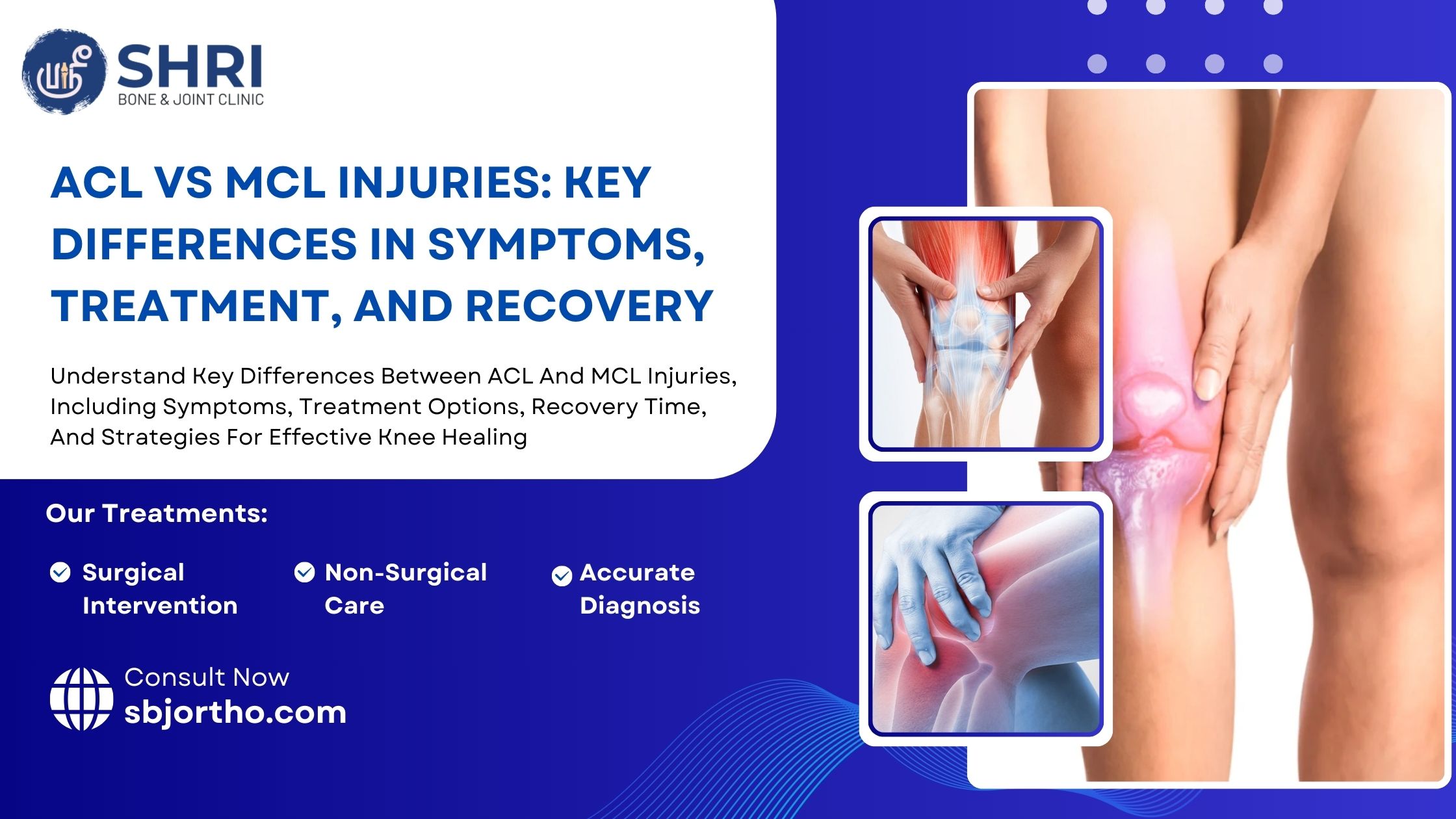Knee injuries are among the most common problems faced by athletes, fitness enthusiasts, and even everyday individuals. Two of the most frequently injured ligaments in the knee are the anterior cruciate ligament (ACL) and the medial collateral ligament (MCL). Although both play important roles in stabilizing the knee, their functions, injury patterns, and recovery processes differ significantly.
Understanding the key differences between ACL and MCL injuries helps patients recognize symptoms early and seek the right treatment.
Anatomy: Where Are the ACL and MCL Located?
- ACL (Anterior Cruciate Ligament): Located in the center of the knee, the ACL connects the thighbone (femur) to the shinbone (tibia). It controls forward and rotational movement of the knee.
- MCL (Medial Collateral Ligament): Found on the inner side of the knee, the MCL connects the femur to the tibia and prevents the knee from bending inward.
Both ligaments are essential for stability, but each controls different types of motion.
Causes of ACL and MCL Injuries
- ACL Injuries often occur during sports that involve sudden stops, pivots, or jumps such as football, basketball, or soccer. A twisting motion while the foot is planted is a common cause.
- MCL Injuries usually result from a direct blow to the outer side of the knee, forcing it inward. Contact sports like rugby or martial arts frequently cause MCL tears.
Symptoms: How to Tell Them Apart
Although ACL and MCL injuries can cause knee pain, their symptoms differ:
ACL Injury Symptoms:
- A loud “pop” at the time of injury
- Sudden instability or the feeling of the knee “giving way”
- Rapid swelling within hours
- Difficulty bearing weight
MCL Injury Symptoms:
- Pain and swelling on the inner side of the knee
- Tenderness along the ligament
- Stiffness and difficulty bending the knee
- Instability when the knee bends inward
Diagnosis
Doctors use a combination of physical tests, patient history, and imaging studies such as MRI to diagnose ligament injuries. While ACL tears often require advanced imaging for confirmation, MCL injuries can sometimes be diagnosed through manual stability tests.
Treatment Options for ACL vs MCL Injuries
Treatment varies depending on the severity of the tear and the patient’s lifestyle.
For ACL Injuries:
- Non-surgical care: Rest, physiotherapy, and bracing may help for partial tears or in less active patients.
- Surgical care: Complete ACL tears typically require surgical intervention, often in the form of graft-based reconstruction.
For MCL Injuries:
- Non-surgical care: Many MCL injuries heal with rest, bracing, and physiotherapy.
- Surgical care: Severe or combined injuries may need MCL repair or reconstruction surgery.
Recovery Process: ACL vs MCL
- ACL Recovery: After surgery, recovery usually takes 6–9 months before athletes can return to competitive sports. Rehabilitation focuses on strengthening, flexibility, and preventing reinjury.
- MCL Recovery: Non-surgical treatment may take 4–8 weeks for mild injuries, while surgical repair or reconstruction can take 4–6 months for full recovery.
Preventing ACL and MCL Injuries
Prevention strategies focus on strengthening and conditioning:
- Regular exercises to build thigh and hip muscles
- Proper warm-up and stretching before sports
- Balance and agility training
- Wearing appropriate footwear
- Avoiding sudden twists and awkward landings
FAQs About ACL and MCL Injuries
Can an ACL and MCL tear occur together?
Yes. High-impact trauma can damage both ligaments at the same time, often requiring surgery.
Is an ACL injury more serious than an MCL injury?
Generally yes, because the ACL rarely heals without surgery, while many MCL injuries can recover with non-surgical treatment.
Can braces help in ACL or MCL injuries?
Braces may support healing in MCL injuries but are less effective for complete ACL tears.
Do ACL and MCL injuries cause arthritis?
If untreated, instability from ligament injuries can increase the risk of knee arthritis over time.
Conclusion
Both ACL and MCL injuries affect knee stability, but they differ in symptoms, causes, treatment, and recovery. The ACL often requires surgical reconstruction for complete tears, while many MCL injuries respond well to conservative care. Recognizing these differences helps patients choose the most effective treatment.
For accurate diagnosis and management, consulting Orthopedic Specialists is essential. In cases requiring surgery, procedures such as ACL Repair Surgery or MCL Repair Surgery are tailored to restore stability, reduce pain, and support long-term recovery.

